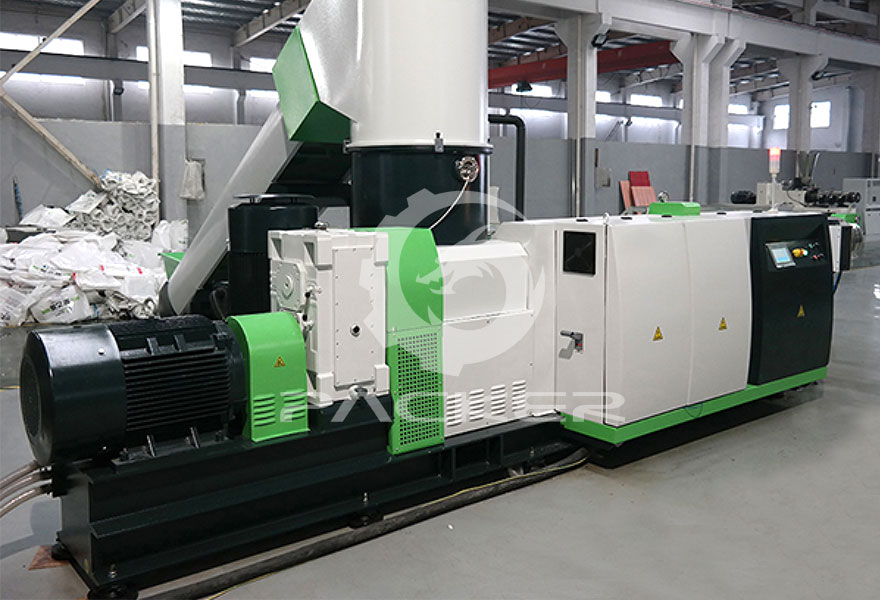Can EPS Foam Recycle Pelletizers Revolutionize Waste Management in the Packaging Industry?
2024-09-26
As the global push for sustainability and effective waste management intensifies, industries are searching for innovative solutions to minimize their environmental impact. One such solution is the EPS foam recycle pelletizer, a machine designed to process expanded polystyrene (EPS) waste into reusable pellets. But can EPS foam recycle pelletizers truly revolutionize waste management in the packaging industry? Let’s delve into their functionality, benefits, and potential impact on the environment and industry practices.
What Is an EPS Foam Recycle Pelletizer?
An EPS foam recycle pelletizer is a specialized piece of equipment that processes discarded EPS foam—commonly used in packaging, insulation, and disposable food containers—into small, reusable pellets. These pellets can then be used to manufacture new EPS products or other plastic goods, effectively closing the recycling loop. The process typically involves crushing the foam, melting it down, and then extruding it into pellet form.
Why Is EPS Foam Recycling Important?
1. Environmental Concerns
EPS foam is notoriously difficult to recycle due to its lightweight and bulky nature, often leading to it being sent to landfills where it can take hundreds of years to decompose. By recycling EPS foam, we can significantly reduce waste in landfills, thus minimizing environmental pollution and conserving natural resources.
2. Resource Recovery
Recycling EPS foam allows for the recovery of valuable materials that can be repurposed into new products. This resource recovery not only helps in conserving raw materials but also reduces the energy consumption and emissions associated with producing new plastics from virgin materials.
How Do EPS Foam Recycle Pelletizers Work?
1. Collection and Sorting
The recycling process begins with the collection of EPS foam waste from various sources, such as packaging facilities and retail stores. Once collected, the foam is sorted to remove contaminants like plastic film or food residues that can interfere with the recycling process.
2. Shredding and Compression
After sorting, the EPS foam is fed into the pelletizer, where it is shredded into smaller pieces. This step reduces the volume of the foam and makes it easier to handle. The shredded foam is then compressed to remove air and prepare it for melting.
3. Melting and Extrusion
The compressed foam is then heated in the pelletizer to melt it down. Once melted, the material is extruded through a die to form small pellets. These pellets can be cooled and cut into uniform sizes, making them ready for reuse in manufacturing processes.
What Are the Benefits of Using EPS Foam Recycle Pelletizers?
1. Cost-Effective Waste Management
Investing in EPS foam recycle pelletizers can lead to significant cost savings for companies dealing with large volumes of foam waste. By recycling their own waste, businesses can reduce disposal costs and even generate revenue by selling the produced pellets to manufacturers.
2. Sustainability and Corporate Responsibility
Implementing EPS recycling programs demonstrates a company’s commitment to sustainability and environmental responsibility. By reducing waste and promoting recycling, businesses can improve their brand image and appeal to environmentally-conscious consumers.
3. Job Creation and Economic Growth
The establishment of EPS recycling facilities can create jobs and stimulate economic growth in local communities. As demand for recycled materials increases, more businesses may emerge to support recycling initiatives, contributing to a circular economy.
Are There Challenges to Consider?
While EPS foam recycle pelletizers offer numerous advantages, there are some challenges associated with their implementation:
- Initial Investment Costs: The upfront cost of purchasing and setting up a pelletizer can be significant. However, the long-term savings and potential revenue from recycled pellets can offset these initial expenses.
- Contamination Issues: Ensuring the quality of recycled EPS can be challenging, especially if the foam is contaminated with other materials. Effective sorting and cleaning processes are essential to maintain the quality of the final product.
Conclusion: A Step Toward Sustainable Packaging Solutions
So, can EPS foam recycle pelletizers revolutionize waste management in the packaging industry? The answer is a resounding yes. By facilitating the recycling of EPS foam waste, these machines offer a practical solution to one of the industry's most pressing environmental challenges.
Not only do they promote sustainable practices and resource recovery, but they also provide economic benefits to businesses and communities alike. As the industry continues to prioritize sustainability, EPS foam recycle pelletizers represent a crucial step toward a greener, more circular economy. Embracing this technology can help pave the way for more responsible waste management practices in the packaging industry, ultimately benefiting both the environment and future generations.



